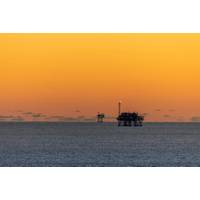Germany builds LNG import terminals
Germany is expanding its natural gas import options as part of efforts to decarbonise and replace Russian supplies.
Here are some details about terminals that will host floating storage regasification (FSRU) units to receive LNG. There are also plans for shore-based terminals, as well as facilities to produce and import ammonia and hydrogen.
In German media, the state-owned Deutsche Energy Terminal (DET), without specifying exact dates for commissioning, said that FSRUs will be operational at Stade as well as Wilhelmshaven 2 before winter.
The Hanseatic Energy Hub had taken a final decision on investment in March for a terminal that will be built at Stade, an inland port located along the Elbe River. It is scheduled to start operations in 2027.
The FSRU Energos Force is expected to be operational until 2027 before the onshore terminal begins operations.
Costs are expected to be around 1 billion euro for the onshore terminal to be built by Spain’s Tecnicas Reunidas.
The gas that has arrived there is allocated to the state-controlled SEFE utility EnBW, and Czech utility CEZ.
HEH has the backing of investment firm Partners Group as well as logistics group Buss and Spanish grid operator Enagas.
WILHELMSHAVEN
Utility Uniper launched Germany’s first FSRU operations, Wilhelmshaven 1 in 2022, on the North Sea.
Uniper plans to build a land-based terminal for ammonia and a cracker during the second half this decade.
Tree Energy Solutions (TES) plans to operate Wilhelmshaven 2 from winter 2024 as DET has now foreshadowed, until 2027. It also plans to convert its operations eventually to clean gas.
BRUNSBUETTEL
Brunsbuettel FSRU began operations in April 2023 on the North Sea site. It was initially chartered by RWE and operated by its trading arm, before being handed over to DET starting 2024.
The facility is a precursor to a land-based gas-fired power plant that has received approval for 40 million euros (44 million dollars) in state funding and has begun ground-laying.
The terminal could begin operations by the end of 2026 when an adjacent ammonia terminal, which was recently inaugurated, could also be started up.
Shell, Gasunie, and KfW are all stakeholders. Shell has also committed to large purchases.
MUKRAN
On Sept. 17, the private company Deutsche ReGas began reloading LNG from the LNG tanker Coral Energy using smaller tanks to deliver LNG in areas without pipeline access.
The site was opened to regular operations on Sept. 2, with FSRUs Energos Power & Neptune.
Mukran on Ruegen Island in the Baltic Sea will supply grids on land via Gascade's OAL pipeline.
Gascade completed its 50 km infrastructure in February. Feed-in is now possible with the existing onshore pipelines NEL & EUGAL.
ReGas has long-term supply agreements with TotalEnergies in France and the trading group MET.
German courts have dismissed legal challenges by the environmental groups DUH, Nabu and others against commercial operations.
LUBMIN
ReGas and Hoegh - which operates a fleet LNG tankers - signed an agreement on June 28, to develop a terminal for the import of hydrogen at the Baltic Sea Port, as a precursor of operations at Mukran.
The two companies plan to convert imported green ammonia into green hydrogen by 2026. This green hydrogen will be fed to Germany's hydrogen network core.
ReGas, which began importing LNG from Lubmin in early 2023, has switched to Mukran.
ReGas plans to build hydrogen electrolysis facilities at Lubmin and Mukran.
Gascade has connected the Eugal 1 and 2 gas pipelines to the grid for a green hydrogen production project in Lubmin. The project is being pursued by HH2E a startup developer that is currently raising funds and purchasing equipment before final investment decisions are made.
Gascade can transport hydrogen and gas blends. $1 = 0.9107 Euros (Reporting and editing by Vera Eckert, Tomasz Janowski, Ros Russell).
(source: Reuters)



